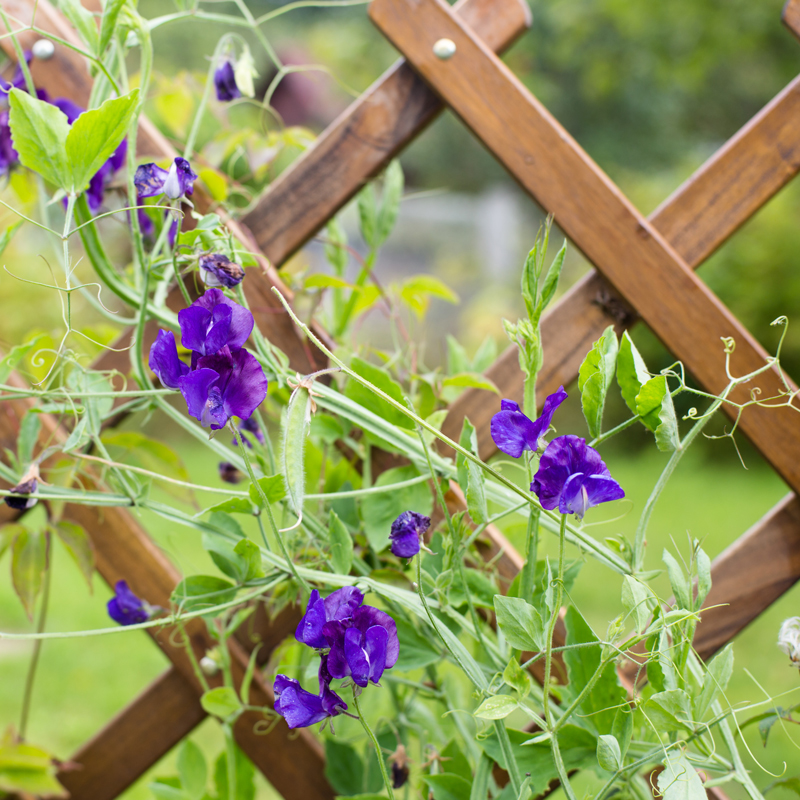Training Plants on a Trellis

A vertical garden is a great way to expand your foot print of growing space and allow you to expand your green space, whatever the size of your property. A trellis system for vegetables also makes them easier to harvest as well as prevents insects and other pests from crawling into your plants. Trellising also reduces the risk of disease on all plants with better circulation and can provide shade for other plants. And training a plant to trellis is easy, just follow these simple steps!
1) Place your trellis as close to the plant as possible, you want your plant to gently lean on the trellis.
2) Once the trellis is in the soil, guide the vines or stems of your plant upward and weave them through the grid or curves.
3) Once the plant is sending out vines all you have to do is help it attach to its trellis. This can be done with twine, garden tape, or even old shoe strings, whatever you have available really as long as it’s soft and won’t cut into the vine.
Vertical gardens also create a whole different dimension to your landscape and are a fun way to add some attractive architectural features to your outdoor living space. You can even use a trellised plant to hide unattractive parts of your home or garden. They can provide a sense of enclosure by screening views or delineating boundaries. The possibilities are endless and a bit of your imagination will go a long way, don’t be afraid to try different things.
Whatever design you do choose, keep these three things to consider when selecting a trellis:
1) Choose supports that are sturdy enough for the vines you want to plant. A climbing rose for example would require a much stronger support than a sweet pea plant.
2) Consider how the plant will grow and what shape of trellis would be ideal. Pole beans and cucumbers may grow nicely up a vertical trellis whereas a tomato plant would need one that would also offer side support like an obelisk or tomato cage.
3) Supports should ideally be made of weatherproof materials such as galvanized or powder-coated steel, painted or treated wood, especially if you are planting a perennial vine.

